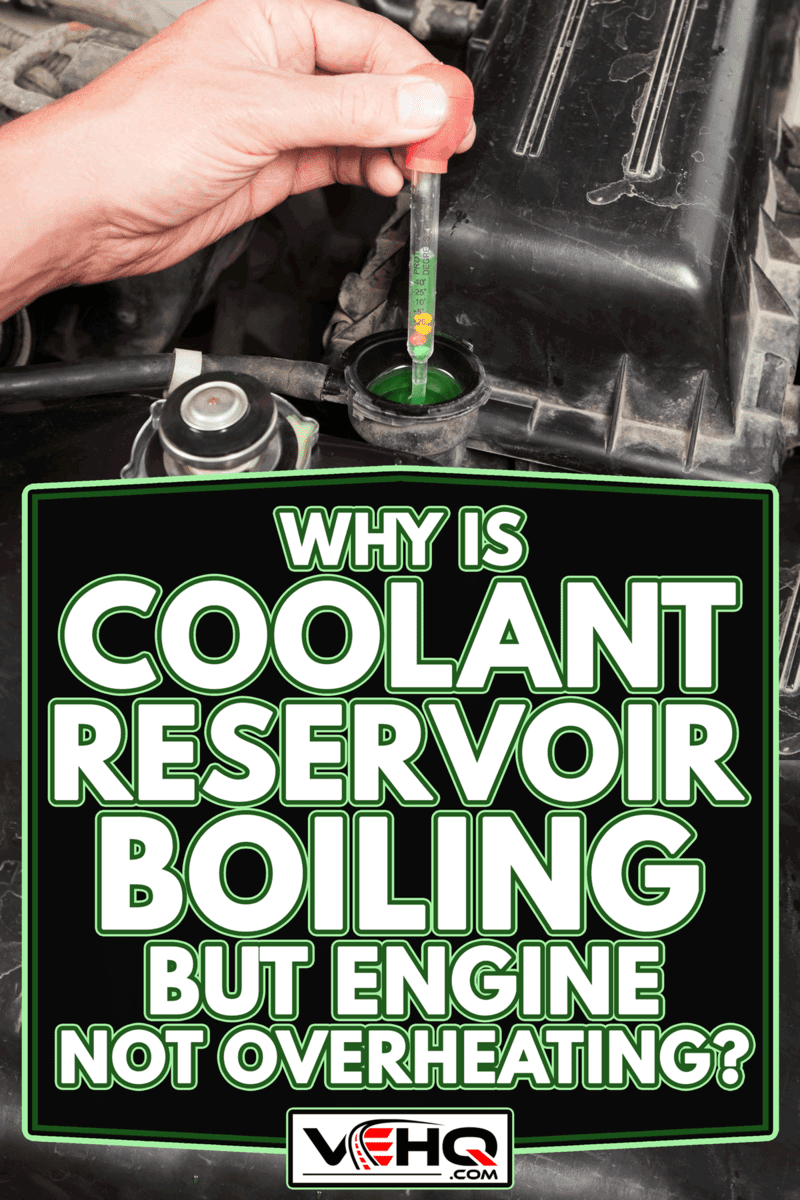Did you notice your coolant boiling, but your car’s temperature is normal? So, you want to know what’s going on. You’ve come to the right place, for we have researched this question, and we have the answer for you.
In most cases, what you see as boiling is air bubbles that find their way to the coolant reservoir. This problem has several causes, and the most common reason is a leak in the radiator pressure cap. Other possible causes include:
- Water pump leak
- Leak in the overflow tank
- Leak in the head gasket
Learn more about this issue and the different possible causes in the sections below. Read on!
What is the liquid cooling system of a car?
Before we proceed with the different causes of this problem, let’s take a brief look at the cooling system of cars and how it works. This will allow us to understand the problem and its causes better.
The liquid cooling system of a car is a sealed network of hoses, pumps, and tanks. It allows cooling fluid or a coolant/antifreeze to move around the cylinders to cool them and prevent overheating. The hot coolant/antifreeze is then pumped to the radiator, where the heat dissipates, and the cycle repeats.
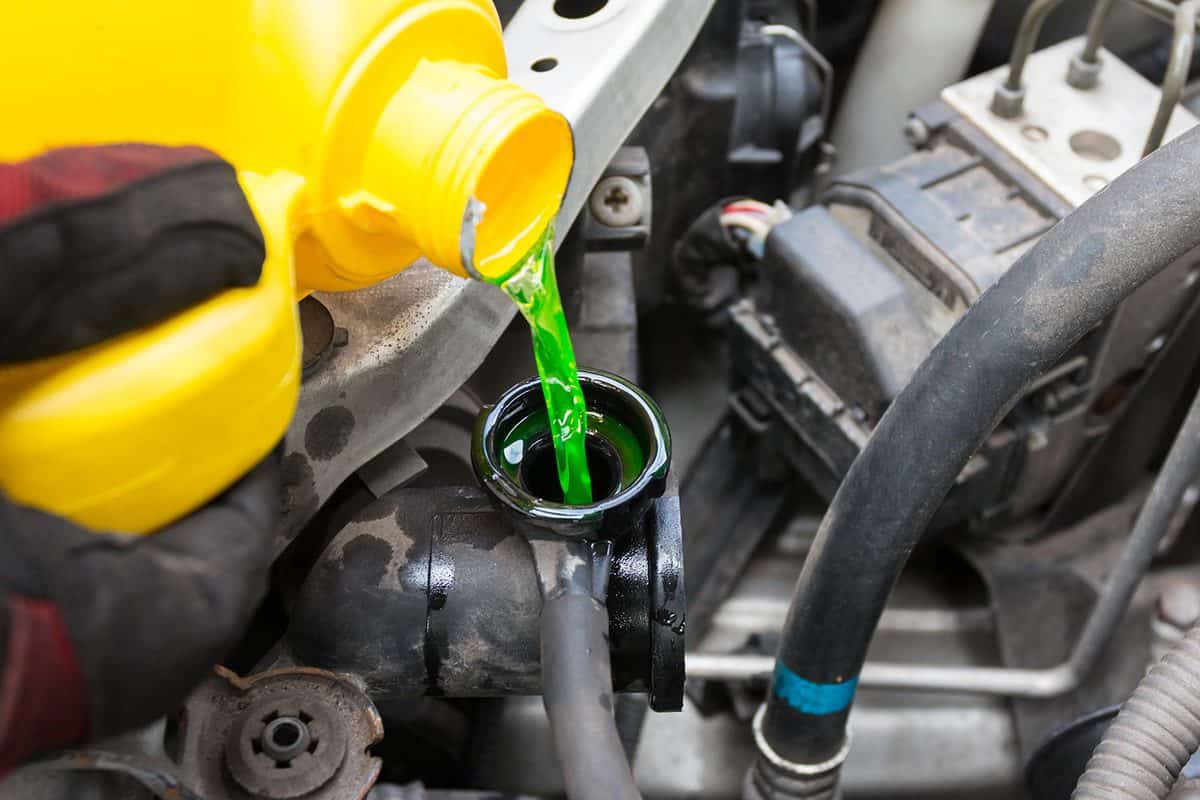
The cooling system is sealed so that it can operate at high pressure. Increasing the pressure of the coolant/antifreeze also increases its boiling point. This prevents the coolant/antifreeze from turning into gas while in operation.
A leak in the system prevents the coolant from achieving the ideal pressure. This can cause the coolant to boil. The steam from boiling can prevent the engine from cooling, further increase the heat, and boil the coolant.
Effect Of Air on the Cooling System
Leaks in the cooling system allow air to get in. A lower pressure also means that your coolant will operate at a lower boiling point. This can cause the water component to become steam and introduce gas into the cooling system.
The presence of air or gas in the cooling system reduces its effectiveness. Air serves as an insulator, preventing the heat in the cylinders from getting transferred to the coolant. If heat stays with the cylinders instead of going to the coolant, then the engine will quickly overheat.
Even though you may see air bubbles while the engine is not overheating, the engine will overheat more quickly if you use your car for long drives.
What are the signs of a bad radiator pressure cap?
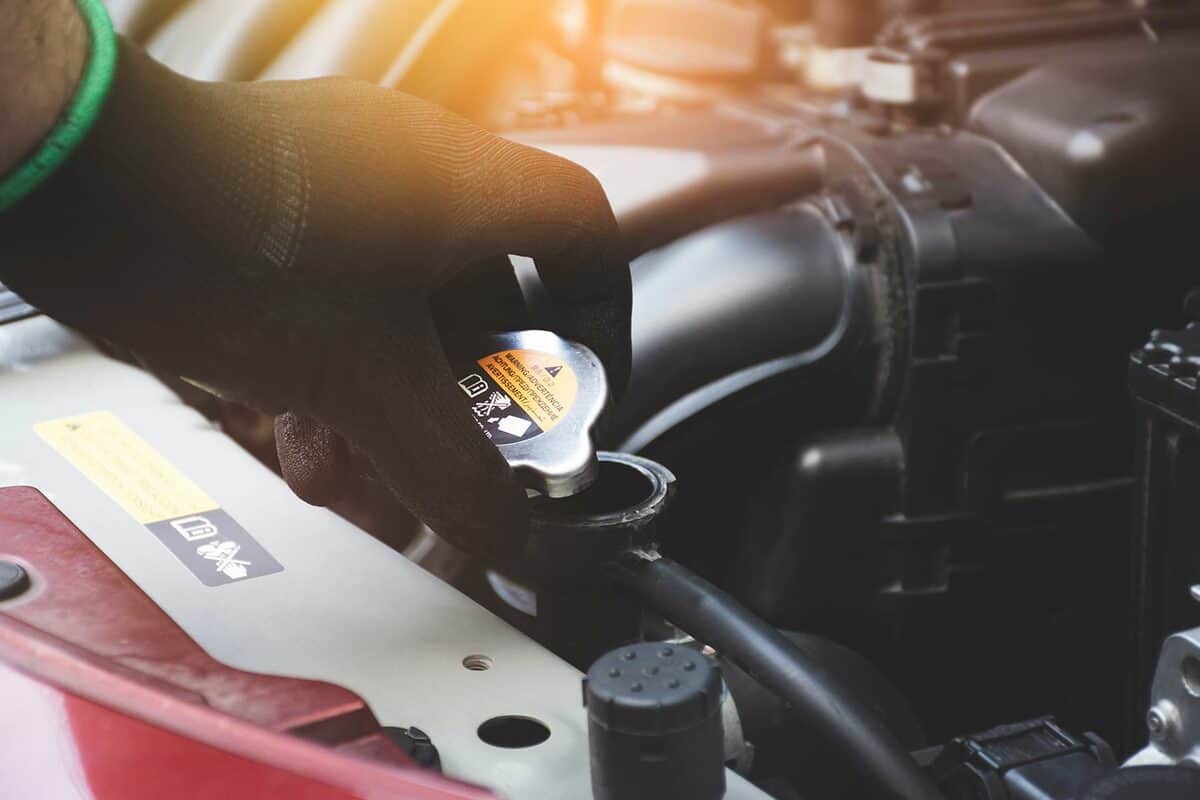
Air can get into the cooling system if the radiator pressure cap no longer makes a good seal. This is the most common cause of air pockets in the cooling system. Check your radiator cap for damage or wear.
Check your radiator for white streaks. This usually indicates that your coolant is leaking from the radiator cap. Coolants often leave white streaks when it dries.
If you observe any symptoms besides bubbling, it is time to replace the radiator cap. Always replace your radiator cap with one that meets or exceeds the standards of your car manufacturer for that component.
What are the symptoms of the water pump failing?
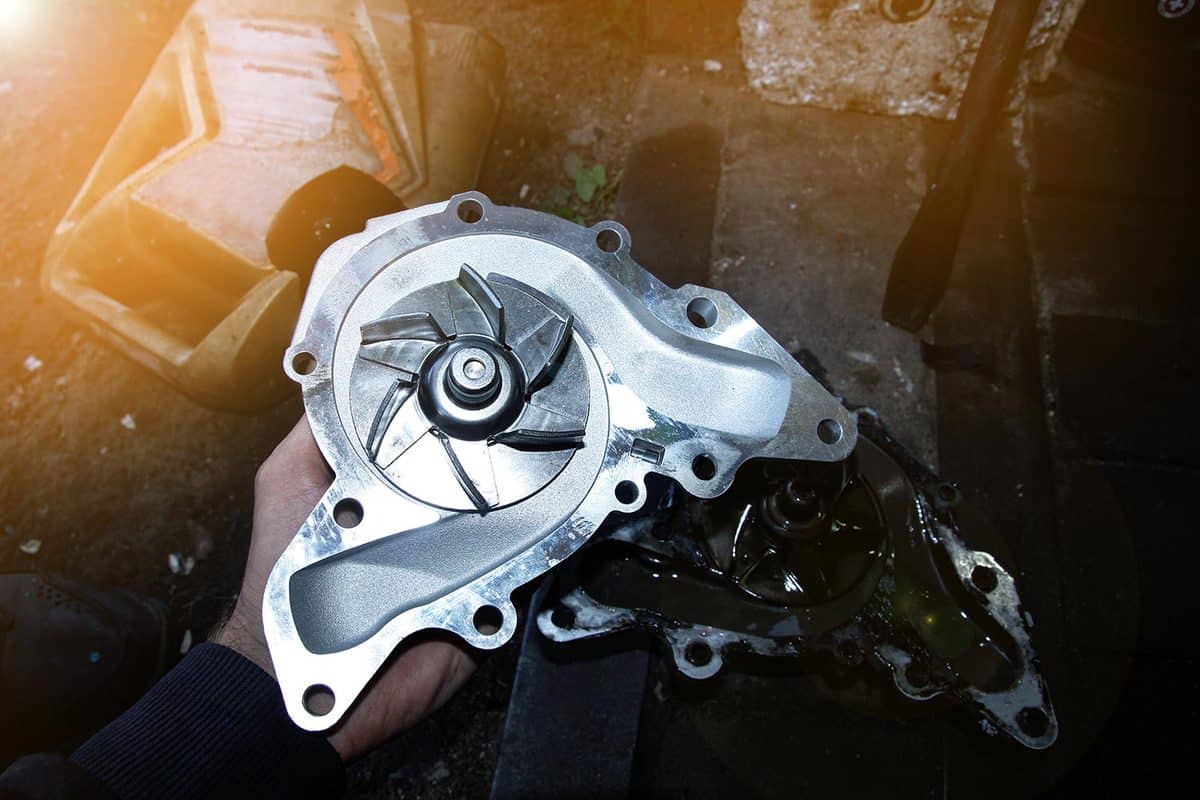
Aside from moving coolant inside the engine, the water pump also serves as a storage area for the coolant. A network of gaskets and seals keeps the coolant inside and maintains the cooling system's pressure.
However, a failing water pump will also show signs of gaskets and seal failure. Look out for coolant leaks under your car near the center. Check your coolant's color (often green, orange, or red) and verify if it matches the leak.
Another symptom of a failing water pump is when you notice your car getting to a higher temperature than normal after driving the usual distance. This can be accompanied by a whining noise coming from the front area of the engine. Worn bearings and loose belts cause this whining/buzzing sound.
Replace a failing water pump immediately because your engine can easily overheat without a pump.
Important Safety Note
Coolants are sweet to the smell and taste. However, it is highly toxic to humans and pets. It is poisonous and can cause severe liver damage. When you see a coolant leak under your car, clean it immediately before your cat, dog, or curious child becomes interested in its sweet smell.
What are the signs of a leaky overflow tank?
Coolant expands as it absorbs heat from the cylinders. This expansion creates additional pressure inside your car's cooling system.
If the coolant expands too much, it will reach the level of the radiator pressure cap. However, the excess coolant flows into the overflow tank before the excess pressure can push against the radiator pressure cap and damage it. When you park your car and turn off the engine, the coolant will slowly return to its normal volume as it cools.
Air can mix with the coolant if there is a leak in the overflow tank or on the hose connecting the overflow tank and the radiator.
Damage or crack on the overflow tank or the overflow hose will cause the coolant to leak. Look for coolant puddles under your car near the overflow tank.
A leaky overflow tank will also cause a sweet smell that can get into your car. Check the coolant level when you smell something sweet from the engine area. A drop in the coolant level is a sure sign of a leak.
What are the signs of a leak in the head gasket?
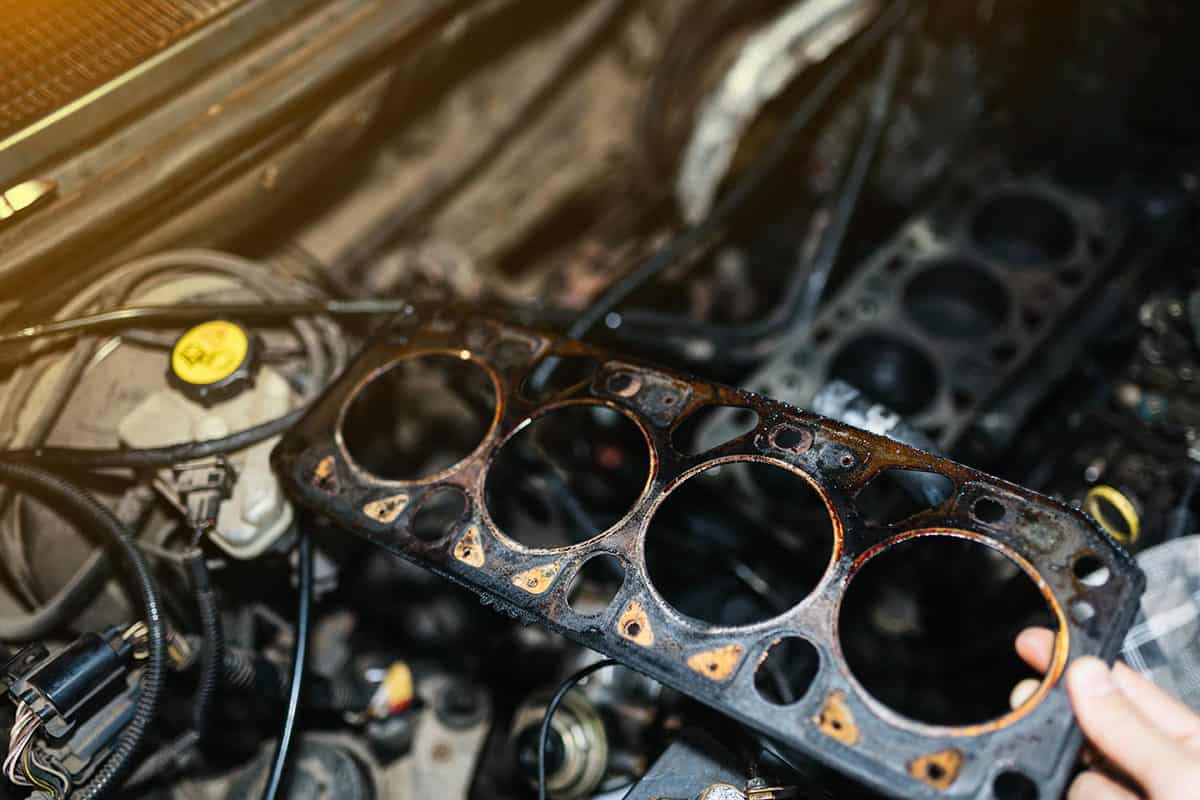
A head gasket is an important engine part that is not commonly known—or seen.
A head gasket is responsible for separating the two main parts of the engine—the cylinder block and the cylinder head. The head gasket prevents oil and coolant from getting to the cylinders and the outside of the engine.
Since it is responsible for keeping the coolant within the coolant pathways, a leak in the head gasket can cause more problems than just a bubbly coolant.
Symptoms Of A Leaky Head Gasket
Bubbly Coolant
A bubbly coolant is the most common symptom of a bad head gasket.
The head gasket keeps the combustion process sealed. Once it fails at this, compressed air will start to leak into the cooling system. The air will eventually find its way to the radiator and cause the coolant to bubble up.
The leaking air and combustion gases will make the coolant look like it is boiling because of the constant gas release.
Test this symptom by having someone step on the accelerator pedal while you observe the bubbly coolant. If the coolant rushes up in its container, it is a leaky head gasket.
Have a professional mechanic replace the head gasket immediately to prevent further damage.
White Smoke
Another common symptom is white smoke coming from the exhaust pipe. White smoke from the exhaust pipe means the leak in the head gasket has gotten serious.
The white smoke comes from coolants that enter the combustion chamber and are burned with gasoline and air.
Keep in mind that the small amount of white smoke when you start your car in the morning is caused by condensation. The white smoke from coolant getting burned is more substantial than that.
Losing Coolant With No Leaks
If you notice that your coolant level is constantly dropping, but you see no visible leaks under your car, it could mean the coolant is getting into the combustion chamber.
A leak in the head gasket will allow the coolant to leak into the combustion chamber, which is constantly mixed with fuel and air. This will cause your car to lose coolant without any visible leaks.
This symptom can come with a rise in the engine's temperature.
This symptom can also happen if your radiator is not cooling the coolant sufficiently. Thus, in this situation, you’re losing coolant because of high temperatures and not because it leaks internally into the combustion chamber.
Verify this symptom with the white smoke symptom.
What color is coolant when it leaks?
When you start to see bubbling in your coolant, take note of its color. It is a possible head gasket leak if it looks darker than usual.
Your coolant will be discolored if a crack in the head gasket separates the pathways of different fluids. A crack in the head gasket can cause your coolant to mix with another fluid and cause discoloration.
The discoloration will look darker if the coolant gets mixed with fluids that go into the combustion chamber.
Conclusion
A boiling or bubbly coolant may be caused by something as simple as a leaky radiator pressure cap or a sign of a bigger problem. Keep an eye on the symptoms to fix the problem early before it worsens and becomes more expensive.
If you enjoyed reading this article, you might find the articles below equally enjoyable to read:
Where Does Antifreeze/Coolant Go In Your Car?
How Long Does Coolant Last In A Car?
